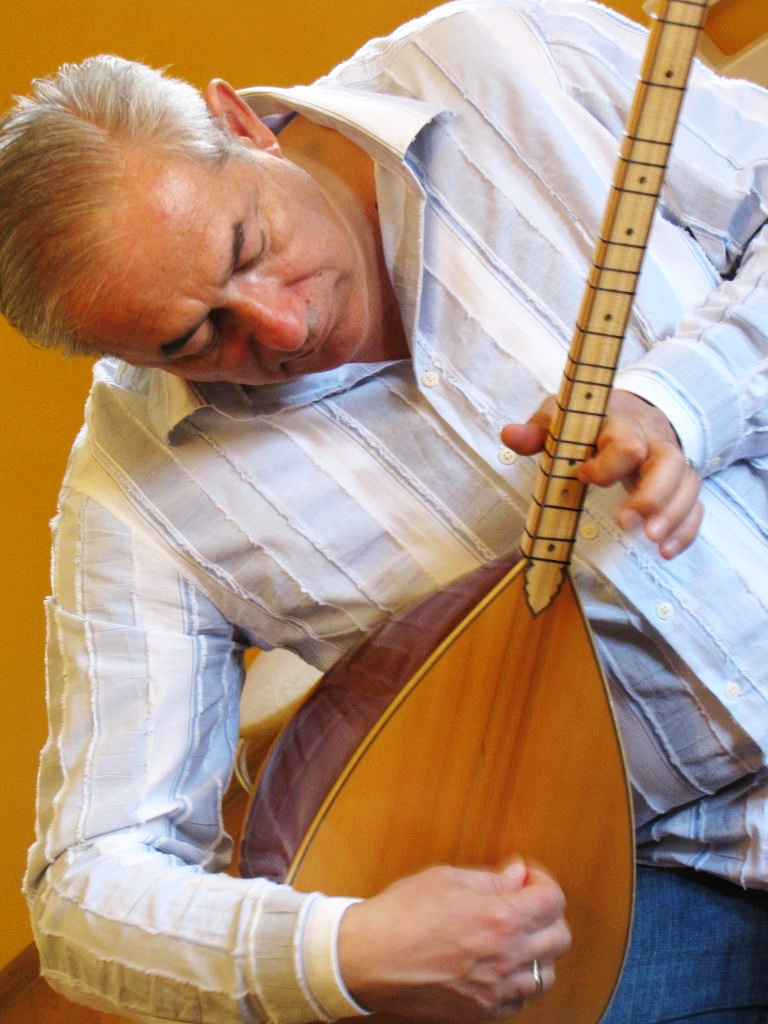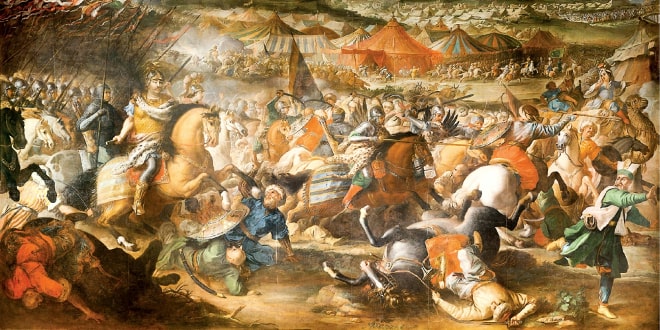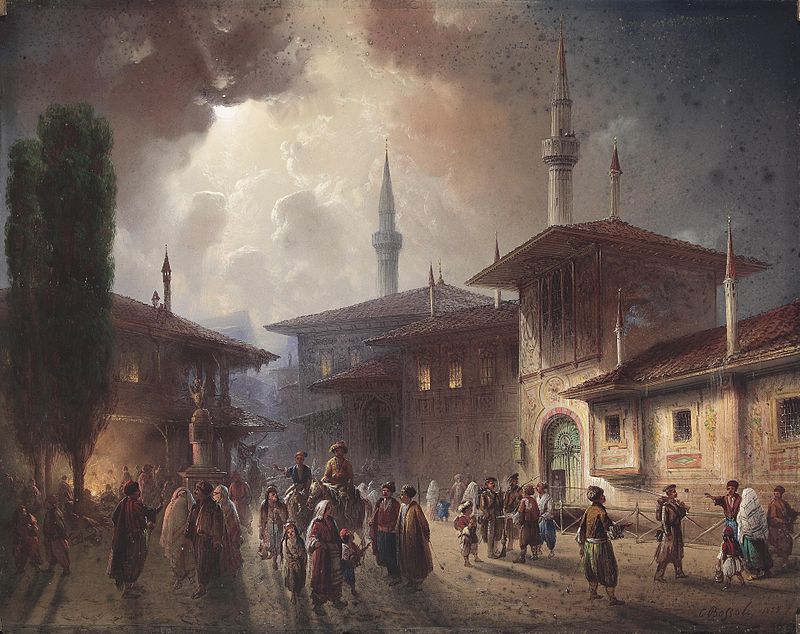Article - Crimean Tatar music of the khan's period.
Crimean Tatar music of the khan's period.
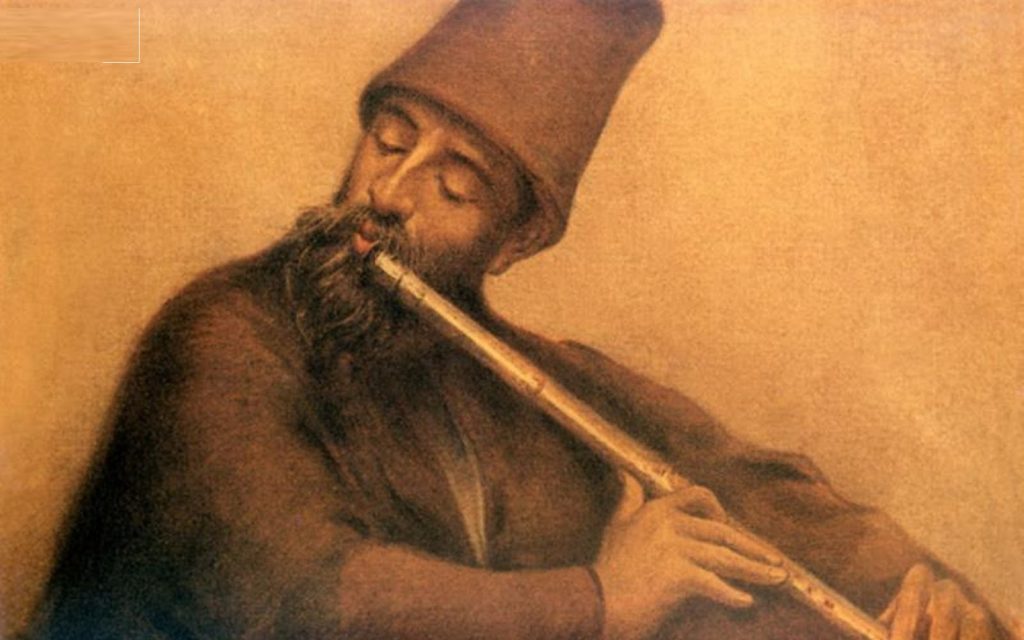
Until recently, the music of the medieval Crimea in Ukraine was virtually unknown. However, Crimean Tatars do have their own classical music, which has a long history of development. For a long time, there was no music in the cultural life of both Crimean Tatars and Crimea as a whole.
This was largely the result of the well-known tragic events of the late eighteenth century, associated with the fall of the Crimean Khanate and the catastrophic changes in the life of the peninsula and its indigenous people. Under the conditions of a deep demographic and cultural crisis caused by several waves of emigration, which not only undermined any cultural movement among Crimean Tatars, but also threatened the very existence of the people in their historical homeland, the conditions for the development of music disappeared. This heritage was forgotten, and for a long time - more than 200 years - the corresponding traditions had not had the opportunity to develop. This created a huge vacuum in the corresponding field and contributed to the formation of a misunderstanding of continuity in the development of Crimean Tatar traditional music culture.
At present, we can claim with confidence that Crimean Tatar classical music, both performing and composing, did not take its rise in the twentieth century; in fact, it has a longer history of development with its roots, at least, in the era of the Crimean Khanate; unfortunately, we have a very vague idea about that today. Some fragments of this heritage, its pieces lived and continue living in our musical culture, but in the form of folklore, and it seems somewhat unnatural (and unfair), requires a logical explanation, and if necessary – a change in the approach to assessing the corresponding musical phenomena.
One of the brightest representatives of Crimea’s cultural history is an outstanding ruler, valiant warrior, a person of the broadest intellectual, political and cultural outlook (historical sources portray him as a generous patron of the arts, point to his passion for science, including exact science) - Crimean khan Bora Gazi Geray II (1554-1607, years of rule 1588-1596, 1596-1607). Until recently, we knew Gazi Geray II more as a brilliant poet, but interestingly, almost all known researchers of his diverse artistic skills appreciate the musical performance and compositional talent of this figure much higher than the literary one and other talents, certainly calling him first (!) in the list of the most famous Turkic composers of the XVI century. At the same time, he takes an honorable place among the earliest representatives of Turkic musical classics in general. If we add to this a significant number of works written by him, as well as a number of scales of traditional Crimean Tatar and more broadly - Turkic classical music (with the names unfamiliar to the modern listener: huizzam, sheddiaraban, bayatiaraban, gulizar, muhalifiirak!), then we will see the image of quite a significant person, whose scale cannot but attract attention. We should add that according to medieval historians, he perfectly mastered almost all the Turkic musical instruments of the time, most appreciating the tanbur – a plucked string instrument. By the way, all the preserved works (over 60) are examples of instrumental music. Samples of other genres, including his vocal works, have not yet been identified.
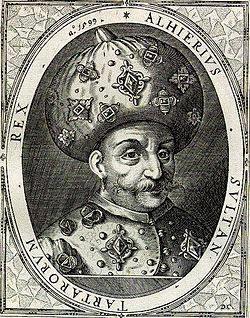
Crimean khan Bora Gazi Geray II
It should be noted that in the treasury of Crimean Tatar classical music of the khan's period there are works not only by Gazi Geray II. It is known that music was written (and some samples of this music have survived), in particular, by several other members of the khan's family. One of Gazi Geray’s nephews, the son of his brother Feth Geray - Choban Mustafa Ahmed Geray, as well as famous Haji Selim Geray I, who ascended the khan's throne four times.
There is no doubt that the khan's palace in Bakhchisarai had a lively musical atmosphere, had its own musical groups, had its own tradition of making music and the corresponding composition. In short, the palace was the center of development of Crimean Tatar classical music culture.
It should be added that the members of the khan's family not only were musicians themselves, but they also tried to support the development of musical creativity in the country. In this regard, it is worth mentioning the name of khan Haji Selim Geray I, who, in all sources, is characterized as a great patron, whose patronage was used not only by Crimean musicians, but also almost all contemporary Ottoman musicians and composers, and above all - the most famous figure of Ottoman classical music Itri Mustafa Buhuri-zade. Besides, Selim Geray and Mustafa Itri, both poets and composers, wrote music, including setting music to each other's words, and these works have survived.
Such attitude to music was typical of Crimea, possibly not only of the ruling dynasty. We can assume that the representatives of the educated class, as well as the nobility did not concede the khan’s family: their palaces, undoubtedly, had their own creative groups and corresponding performing traditions.
In the music of the khan's period, there were a number of different directions: classical (palace) music, secular in content, the centers of which were the khan's palace and the palaces of the Crimean aristocracy; religious music – religious Sufi, developing in mosques, madrassas and Sufi monasteries; and finally, Ashik music – a multi-genre work of folk performers – poets-singers-Ashik. It is known that in the Middle Ages, the Crimean khans also used music for military purposes. "… And then played the Afrasiab trumpets; after that, the khan left a thousand archers to defend the castles of Or under the leadership of Nureddin Sultan, as a commander of the castle, the khan himself…, to the sounds of tambourines and timpani, set off from Or to the field at the head of forty thousand troops" (Celebi E. Travel book - Simferopol: Tavriya, 1996. - P. 63).
"The khans received the right to own two tugs, two banners and flags, as well as a cappella group where seven musicians played instruments of any kind. In the army, however, they played the trumpets, in the style of the Afrasiab trumpets from their ancestors’ days, as well as the trumpets and drums such as those used by Jemshid. " (Ibid., P. 106).
"… Under Krym-Geray’s rule, Bakhchisaray Palace became the home of muses and science: the khan surrounded himself with educated people… Of the dramatic genre, the khan loved French comedy, in particular Moliere, and he adored music so much that he could not deny himself this pleasure even on his deathbed: a few hours before his death, feeling death approaching, he ordered to play a concert he had arranged in advance. "
Music became an essential element of various theatrical performances, in particular, puppet theater (shadows) - karagez.
Interest in the art of music was observed even in religious (Muslim) circles, who, as we know, did not devote much attention to such arts.
Crimean Khan Haji Selim I, like the vast majority of his contemporaries - representatives of various creative circles (musicians, composers, calligraphers, miniaturists, poets, etc.), was a member of the Sufi fraternity mevlevi (fraternity of the so-called "whirling dervishes"), which came from a genius Anatolian mystic poet and spiritual mentor Jalyaleddin Rumi (Mevlyana 1207-1273). The place of music and poetry in the fraternity’s ritual was known to be extremely important. Moreover, the mevlevi monasteries were, among other things, a kind of center for the development of musical art, performing, according to modern Turkish musicologists, the role of modern conservatories.
As for Ashik music, it will probably be enough to name only one of its representatives - a native of Kezlev (Gozleve, now Evpatoria) Ashik Omer (d. 1707): the bearers of the Ashik tradition, as well as the absolute majority of researchers recognized him as the first in the long list of Ashik not only of Crimea, but of the entire Ottoman region as a whole (and this is hundreds and hundreds of names!).
One of the main genres of music of the khan's period is peshrev (peshraf, pishrev, from Persian "pish" - in front, "rev" - go); it is an integral part of the great cyclic form of traditional Turkic classical vocal and instrumental music "Fasil" and is performed at the very beginning of the cycle. The classic type of peshrev resembles a rondo-shaped form and consists of sections (episodes) - the so-called "hane", after each of which there is a part of the "teslym" or "myulyazime", which serves as a refrain. The vast majority of peshrevs consist of 4 hanes, although there are plays that have 2, 3, 5 and even 6 hanes.
If in the first hane (exposition), the melodic pattern is maintained with a certain scale and tonality, then in the following hanes (development), developing or sometimes contrasting in theme, there are certain scale and tonality deviations. Always performed without changes, the teslym (refrain) returns the melody to the main tonality and the original scale.
Karabatak peshrevs constitute a special group. The main distinguishing feature of the plays, in the name of which there is a word karabatak, is the composition using the formula "question - answer", where the instrumental solo batak is contrasted with the ensemble - beraber (together), which sounds in unison.
The names of peshrevs are closely connected with the scales of Turkic music and often reflect geographical concepts (Isfahan, Shiraz, Iraq, Nihavend, etc.), figurative representations (Rast - direct, correct, Gulistan – a flower garden of roses), real historical events (e.g. siege and conquest of Belgrade by Turkish and Crimean Tatar troops in 1595, etc.
Peshrev is preceded by taksim (from Persian "division") – an improvisational form, which is performed in a free rhythm (ad libitum) with solo instruments, which emphasizes the peculiarities of a particular scale and is accompanied by a moderate tone.
Taksim serves as a kind of prelude, and is also an interlude that connects the sections of a larger cyclic form fasil. In religious music, there are only vocal taksims.
Another form of classical instrumental music is saz semais. This form also consists of four hanes and a teslym.
The fundamental difference between saz semais and peshrev is obligatory (with rare exceptions) accompaniment of the first three hanes and a teslym by usul aksak semai and a free in metro-rhythmic and tempo relation fourth hane, which is usually accompanied by usul semai, yuryuk semai, devry hindi and others. Occasionally, there are saz semais, where the function of a teslym is performed by the first hane. In such cases, the number of hanes is reduced to three.
Traditional classical music of the East is accompanied by certain ostinato metro-rhythmic formulas - usuls performed on percussion instruments. Usuls are divided into two groups: simple and compound. The simple ones include usuls, the metro-rhythmic basis of which is the sizes 2/8, 2/4, 3/8, 3/4. The compound usuls are formed by the sum of several simple ones: 4/8 = 2/8 + 2/8, 5/4 = 2/4 + 3/4 or 3/4 + 2/4, 7/8 = 3/8 + 4/8 or 4/8 + 3/8 etc. Usuls consisting of more than 15 bits are called large, for example, 20/4 = 4/4 + 6/4 + 6/4 + 4/4.
The peshrevs use usuls with constant and variable meters, which are combined into large cycles (24, 32, 48 and more beats) and have certain names - hafif (light), sakil (heavy), etc.
Musical instruments that were widely used in Crimea during the khan's period include wind instruments - zurna, tulup-zurna, kaval, nai (ney), kamysh-kaval; string instruments - tanbur, ud, rebab, kemanche, saz, santir; percussion instruments - def, dare, dumbelek, davul, etc.
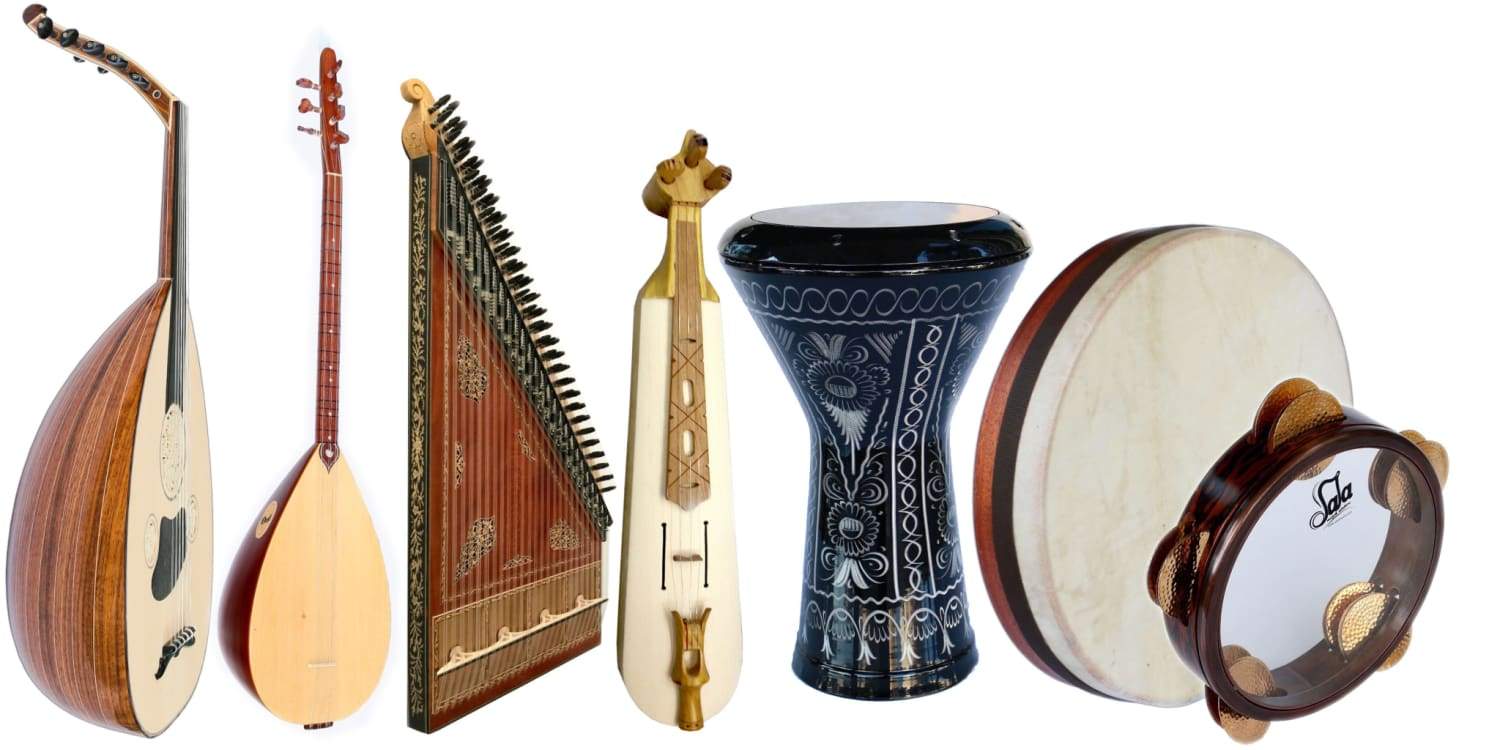
Musical instruments
Unfortunately, at present all this invaluable layer of Crimean musical culture remains almost unexplored. We cannot but mention a great number of theoretical problems associated with the perception and study of Crimean Tatar traditional classical music - starting with the peculiarities of its system, instruments, forms, etc. In front of us, there is a huge world, very bright and original, but completely forgotten, which requires a very special attitude, including serious educational training, up to the formation of the necessary research centers, as well as the opening of appropriate departments in music educational institutions.
The pride of the twentieth-century Turkish literature, eminent poet and diplomat Yahya Kemal Beyatli remarks in one of his famous poems that glorified the unique beauty and refinement of Turkish (Ottoman) classical music: “One who does not understand our music will not understand us!" In these words, there is the recognition of the extraordinary role of traditional music culture in the process of forming the essence of national character, and, accordingly, the crucial importance of understanding the national musical classics both for the correct perception of the culture from the outside and as well as for self-awareness from within.
Time shows that the problems of traditional classical music become relevant, this music itself becomes relevant; you want to listen to it, you want to perform, study it, and, moreover, you want to try to develop the traditions inherent in it.
The article uses materials from the book "Crimean Tatar instrumental music of the khan's period" / Editor-compiler J. Karikov. Foreword by N. Abdulwaap. - Simferopol: "Fate", 2007

